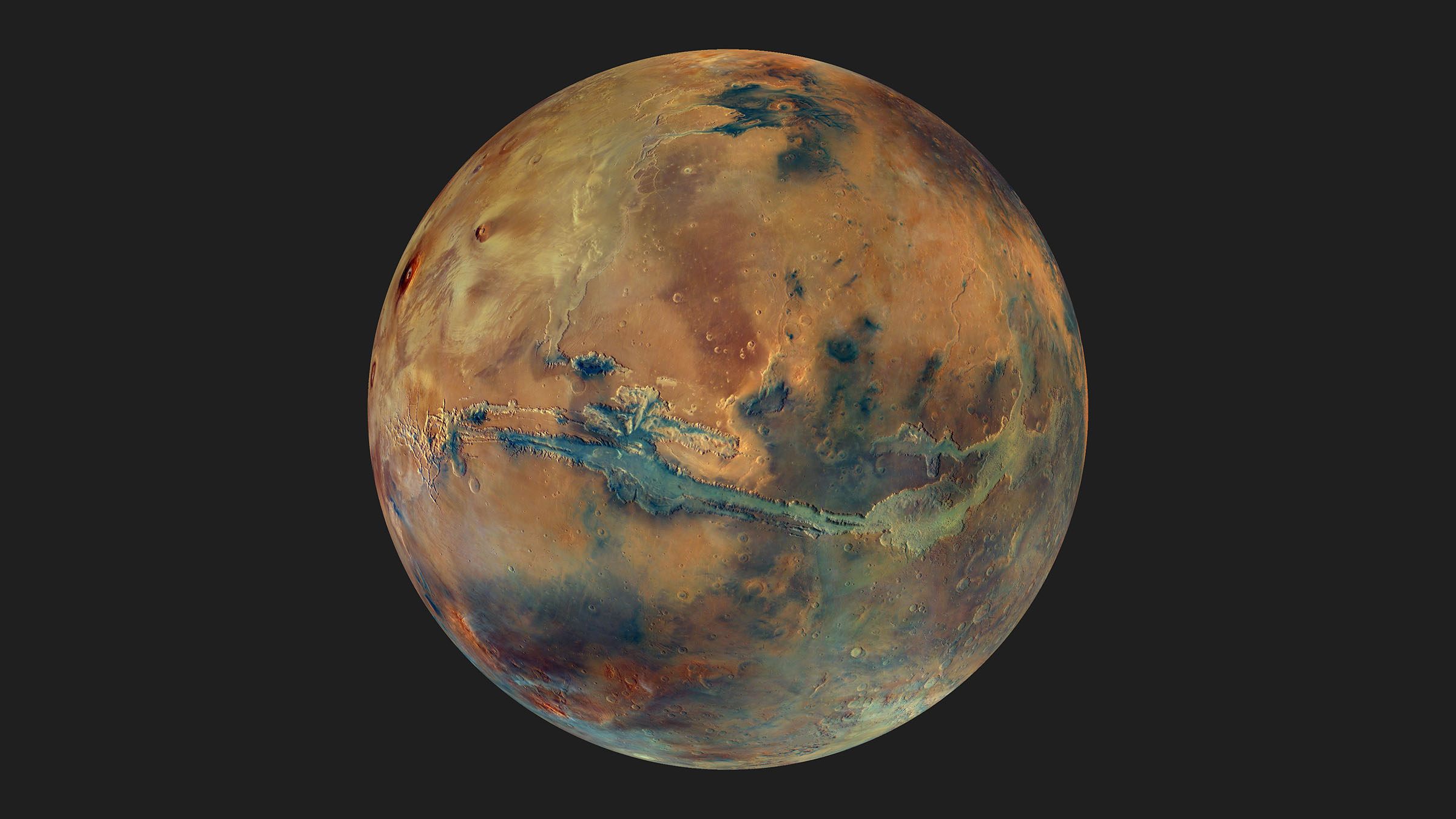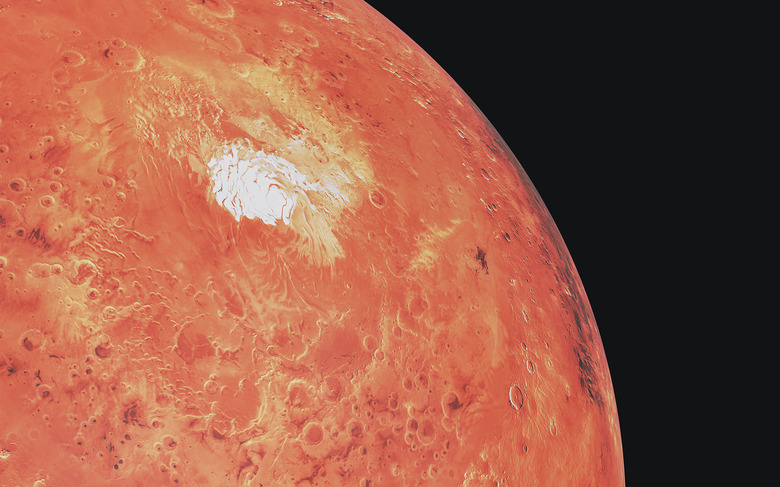ESA's Mars Express Celebrates 20 Years With Beautiful Global Mosaic
The European Space Agency's Mars Express has studied the Red Planet for 20 years. It's hard to believe it has been that long, but the Express has given us a lot of great data to build on our goals to understand and map the Martian surface. To celebrate the spacecraft's anniversary, the ESA has released a beautiful global mosaic showing Mars off in more detail than we have ever seen.
The new mosaic was created using data gathered by the Mars Express spacecraft. It was produced using images from the High Resolution Stereo Camera (HRSC) onboard the observatory. Looking at the grainy images we've captured before, compared with the detail and colors showcased here, it almost feels like we're looking at Mars properly for the first time.
Mars was given its nickname thanks to its red-like sandy color. And while it's easy to think of the planet as just being one massive, sprawling collection of sand dunes, there are other colors at work here, too. The ESA's latest Mars Express mosaic gives us a full glimpse into the Red Planet's proper coloring, as darkly colored paths of grey-black basaltic sands cut through the sandy dunes, creating a scarred-looking world.

It really is quite a beautiful piece, and one that enhances the local color and contrast of the planet in shocking detail. Thanks to the nine imaging channels built into the HRSC, the Mars Express is able to visualize Mars in three dimensions and full color. Unfortunately, getting the exact coloring down is difficult because of all the swirling dust and the ever-changing opacity of the Martian atmosphere.
In the past, the Mars Express has gotten around its issue using image processing. However, that creates reduced variations in the colors of the different parts of the planet, giving it that singular grainy, sandy look. However, this time, the team used a color model derived from high-altitude observations to preserve the color variations while still revealing the planet's rich view. The result is this beautiful mosaic.
And each of those colors is indeed a different material, really outlining just how vast and different the makeup of the Red Planet is when you start to dig deeper into it. Hopefully, images like this give astronomers even more information about the planet, especially if NASA's plan to send a manned mission to Mars ever becomes a reality, and that information is needed.
